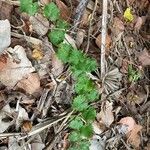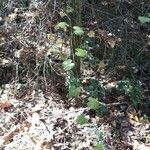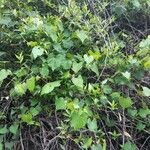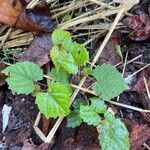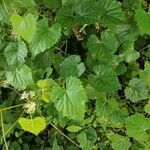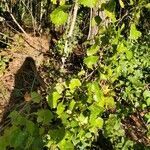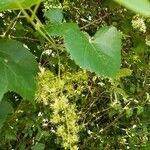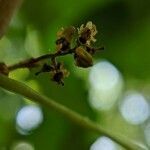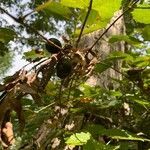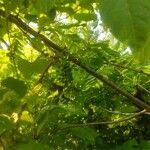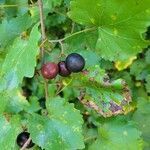A vigorous deciduous vine. It can grow to 30 m long. They have a tight non shedding bark. The shoots are warty and the tendrils are unbranched. The leaves have slight lobes. The leaves are 6-12 cm long with toothed edges. The leaves are dark green on top and greenish yellow underneath. The leaves are glossy on both surfaces. Male and female flowers occur on separate plants. The flowers are small and green. Fruit occur in small loose clusters of 3-40 grapes. The fruit are round and 2-4 cm across and with a tough skin. These contain up to 5 hard oblong seeds. The fruit can range from green to bronze to red or purple. There are several different cultivated varieties.
High-climbing vine with tight bark, the young branches with many lenticels; pith continuous through the nodes; lvs firm, glossy on both sides, rotund to cordate-ovate, 6–12 cm, often somewhat wider, rarely slightly lobed, coarsely and irregularly serrate, sub-glabrous at maturity except for tufts of hair in the vein-axils, the basal sinus 90° or wider, with entire margins; panicles short (2–5 cm), densely fld; fr few in a subglobose cluster, 1–2 cm, thick-skinned; 2n=40. Moist soil; Del. to Ky. and Mo., s. to Fla. and Tex.
